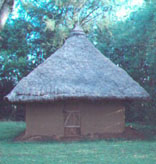03/29/2007


HOME
GRANTS
ARCHIVES
;
re: *MINERALS YEARBOOK 1976*
Wanyee Kinuthia wrote:
Taveta region. The small graphite mine located in the Machakos District, 40 miles from Kiboise, was recently closed down, but the deposit was still considered promising by Kenyan authorities.
An Austrian-supported exploration team reported deposits of exploitable size in the Taita-Taveta region including 10 million tons of kaolin and 5 million tons of kyanite.
The Austrians were to spend $1.4 million on the prospecting effort. Deposits of gem stones were also known in the area. The Kenyan Mines and Geological Department was to receive technical assistance for mineral exploration from the Canadian Government.
A development agreement was expected to be signed in March 1977, providing $1.06 million to support exploration over the coastal mineral and gem stone belt, and over selected parts of Nyanza and Western Provinces. Under terms of the agreement, Kenya was to employ a private Canadian firm Terrasurveys to carry out airborne magnetic and radio metric surveys.
Less than 10 tons per year of magnesite has been mined in Kenya since 1974 owing to suspension of the Kinyiki Hill mine operations.
New management was expected to* renew production. A steel rolling mill company was to mine the magnesite for use in making brick for its mill.
The Government was negotiating for capital participation in the Magadi Soda Co. Ltd., but no agreement was reached. Soda ash production was up to 115,214 tons in 1976 in spite of slackened demand. The company had a potential for producing more than 200,000 tons per year. The plant had two kilns, together capable of processing 800 tons of soda ash per day.
Reserves in Lake Magadi were calculated to a depth of 10 feet to be 100 million tons. According to company officials, however, the trona appeared to form as quickly as it was mined. The company drilled the lake to a depth greater than 400 feet and found that the soda fluoride and clay contents increased with depth; the best material was in the top 10 to 25 feet. The company had two dredges, one capable of dredging to a depth of 25 feet.
Magadi Soda produced two types of salt in large crystals for grinding and refining elsewhere. Red iron oxide was added to the variety made for animal use and iodine (30 to 40 parts per million, as required by the Government) was added to that intended for human consumption. Salt was produced from the liquor associated with the soda deposits in Lake Magadi. The liquor was pumped to evaporating paddocks where it was separated from the sodium carbonate by evaporating techniques, scraped up, washed, and then bagged in 80-kilogram bags. In 1976, Magadi Soda produced 50,000 tons of salt valued at $40 per ton. Salt production, conducted only during the dry season was usually equal to about 25% of soda ash production.
The Italian firm Saltech International was building a salt refinery in Mombasa. By 1977, the plant was expected to produce salt from Malindi at an initial rate of 50,000 tons per year to be increased later to 80,000 tons per year.
Basement-system limestone was exploited for the manufacture of portland cement at Kabinga, south of Sultan Hamud. Marble was quarried for ornamental stone and lime products near Turoka, Kajiado District Calcite veins cut carbon atite bodies at Mrima Hill, Coast Region; Homa Hill, South Nyanza District; and Run. At the first two localities, the mineral formed white or colorless bladed crystals up to 1 foot in length, which formed radiating clusters. The Run calcite tended to be massive in habit. A firm in the Kajiado area produced calcite for Ceramic Industries of East Africa Ltd. for the manufacture of eating utensils.
A Japanese company was mining vermiculite from a small deposit located near Samburu near Mt. Kenya. Production of about 100 tons per month started in 1972. The 1976 production of vermiculite was reported as 3,587 tons valued at $755,615.
Joluo.com
Akelo nyar Kager, jaluo@jaluo.com
IDWARO TICH?
INJILI GOSPEL
ABILA
GALAMORO : Riwruok mar JOLUO e Piny Ngima, orwaku uduto mondo ubed e kanyakla mar burani. Ornwa nyingi gi nondi kaka obedo. Riwruok e teko joka Nyanam.